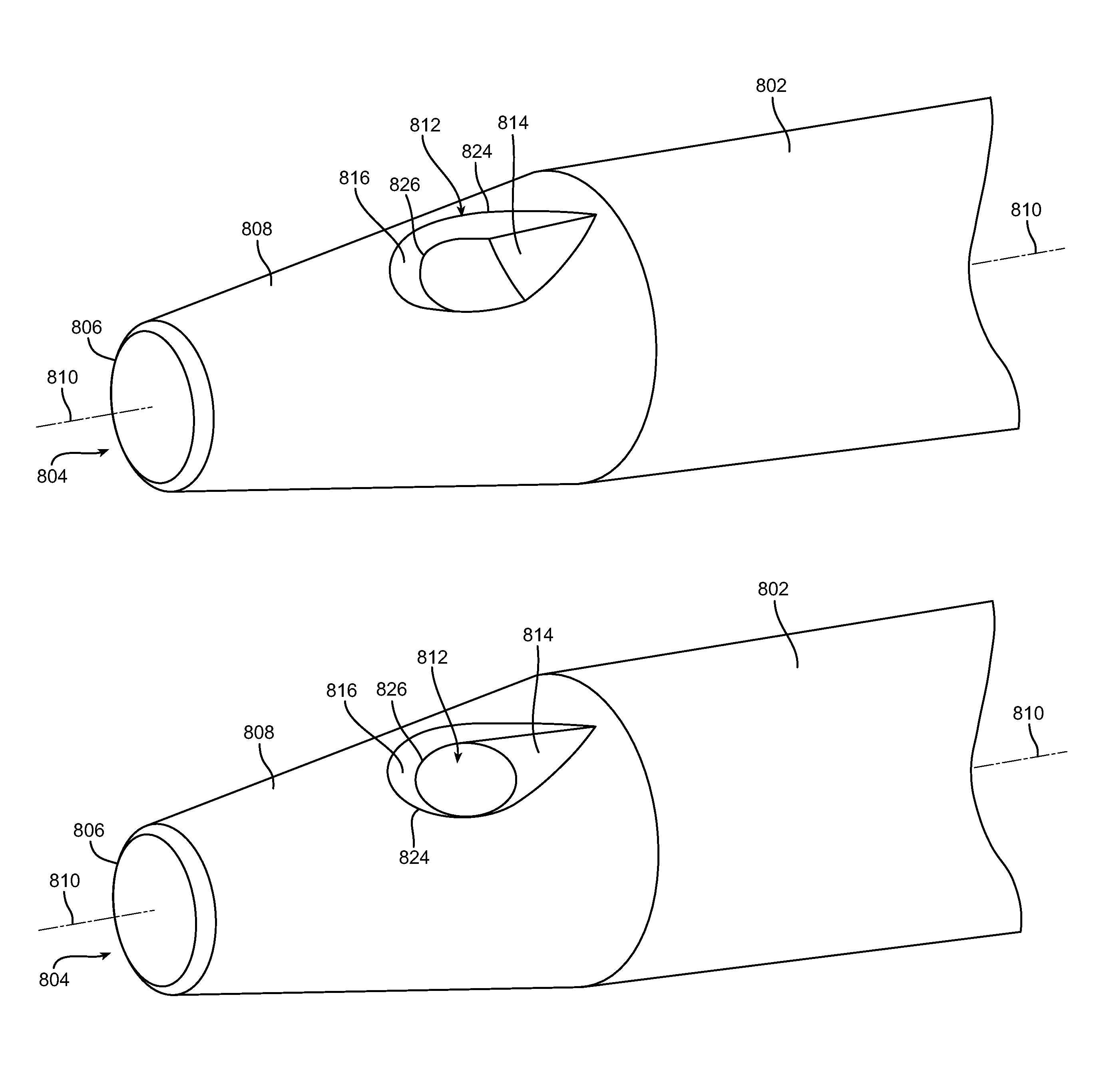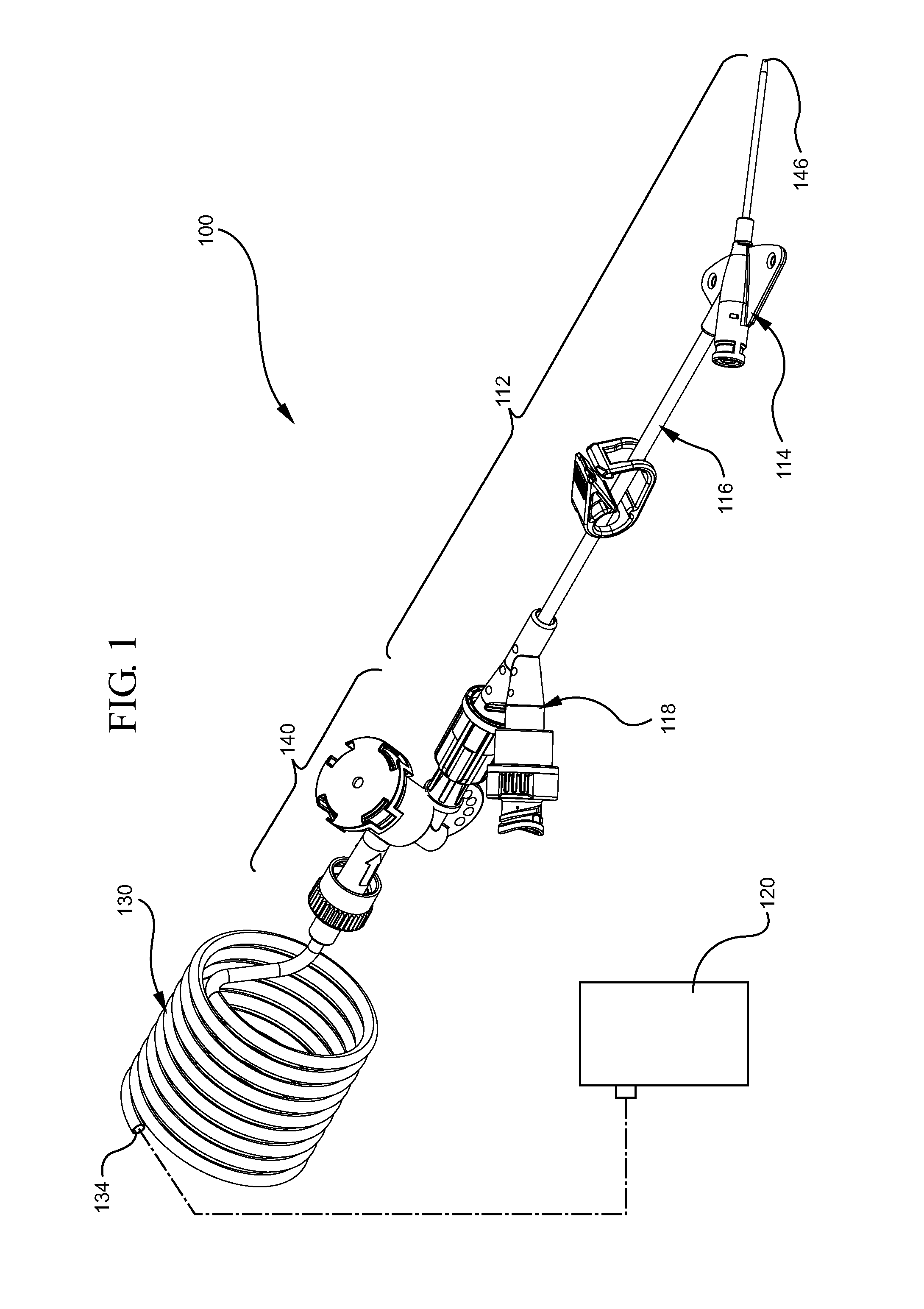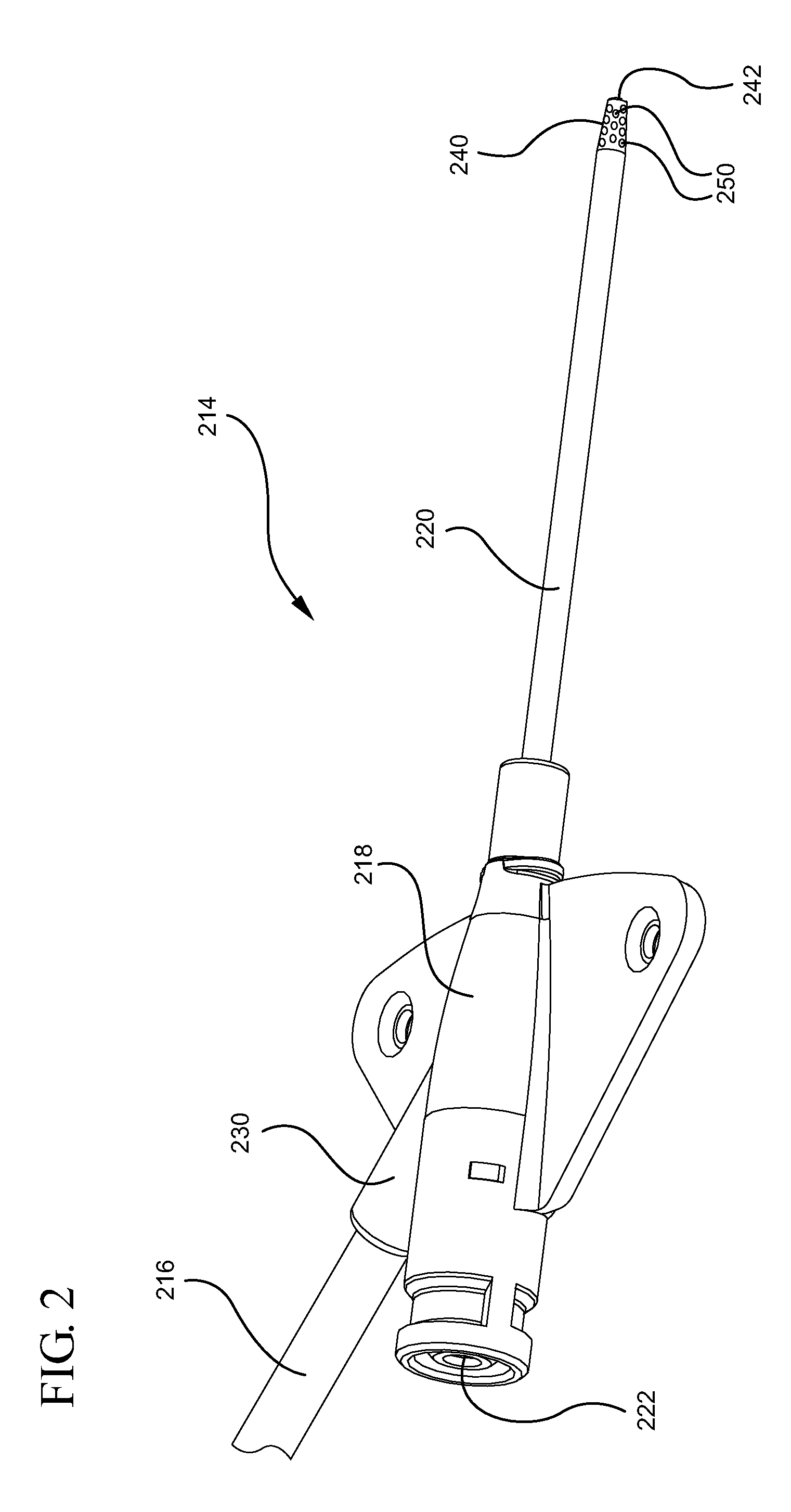Catheter hole having an inclined trailing edge
a trailing edge and catheter technology, applied in the field of catheters, can solve the problems of high pressure within the infusion system, failure of the infusion system components, and undesirable acceleration of the infused fluid, and achieve the effect of faster and more efficient rapid infusion procedures
- Summary
- Abstract
- Description
- Claims
- Application Information
AI Technical Summary
Benefits of technology
Problems solved by technology
Method used
Image
Examples
example 1
Tip Jet Velocity Comparison
[0115]The jet velocities at the tip of a standard catheter are in excess of 1,000 in / sec for a 5 ml / sec volumetric flow rate setting, which results in a large force applied to the vein wall of a patient. This force is treacherous for patients with non-optimal vein structure provisions increasing the likelihood of extravasation or intima damage with increasing flow rates.
[0116]Jet tip velocities of a standard 22 GA×1.00″ catheter (V_tip Current) were compared to a 22 GA×1.00″ catheter (V_tip Ex. 1-V_tip Ex. 4) modified to include a plurality of diffusion holes, as described in connection with FIGS. 4A and 4B, above. Quadruplicate samples of the modified catheter were tested at flow rates of 1 ml / sec, 2 ml / sec, 3 ml / sec, 4 ml / sec, and 5 ml / sec. Tip jet velocity was then recorded for each sample and compared to the jet velocity of the standard catheter at each flow rate. The experiment demonstrated that the overall tip jet velocity of the modified catheter wa...
example 2
System Pressure Comparison
[0117]Internal pressures within an infusion system were compared between an infusion system using a standard 22 GA×1.00″ catheter and an infusion system using a 22 GA×1.00″ catheter (P_inj #1 and P_inj #2) modified to include a plurality of diffusion holes, as described in connection with FIGS. 4A and 4B, above.
[0118]System pressure was measured both within each infusion pump (P_inj Current, P_inj 1 and P_inj 2) and the inner lumen of each catheter (P_sept Current, P_sept 1 and P_sept 2). System pressure was tested and recorded at flow rates of 1 ml / sec, 2 ml / sec, 3 ml / sec, 4 ml / sec, and 5 ml / sec. System pressures at each flow rate where then graphed, as shown in FIG. 6.
[0119]The results of the experiment demonstrate an increase in the volumetric flow rate by decreasing system pressure by nearly 30%, with the greatest reduction in pressure being shown within the lumen of the modified catheters.
example 3
Computational Fluid Dynamic Analysis
[0120]Computation fluid dynamic analysis was conducted on a standard 22 GA×1.00″ catheter modified to include a plurality of diffusion holes bored approximately 45° relative to the inner wall surface of the catheter. The analysis revealed an addition 6% diversion of bulk flow from the main stream into the diffusion holes, as compared to a standard 22 GA×1.00″ catheter having a plurality of diffusion holes bored 90° relative to the inner wall surface of the catheter. The analysis further revealed a significant increase in fluid flow 492 through the cross section of the diffusion hole 450, as compared to the straight holes of the standard catheter. While the diffusion holes 450 of the present invention did show a slight recirculation eddy 494, the recirculation eddy 494 was significantly weaker as compared to the circulation eddy 392 of the standard catheter. A representative rendering of the fluid flow 492 is shown in FIG. 4B.
PUM
 Login to View More
Login to View More Abstract
Description
Claims
Application Information
 Login to View More
Login to View More - R&D
- Intellectual Property
- Life Sciences
- Materials
- Tech Scout
- Unparalleled Data Quality
- Higher Quality Content
- 60% Fewer Hallucinations
Browse by: Latest US Patents, China's latest patents, Technical Efficacy Thesaurus, Application Domain, Technology Topic, Popular Technical Reports.
© 2025 PatSnap. All rights reserved.Legal|Privacy policy|Modern Slavery Act Transparency Statement|Sitemap|About US| Contact US: help@patsnap.com



